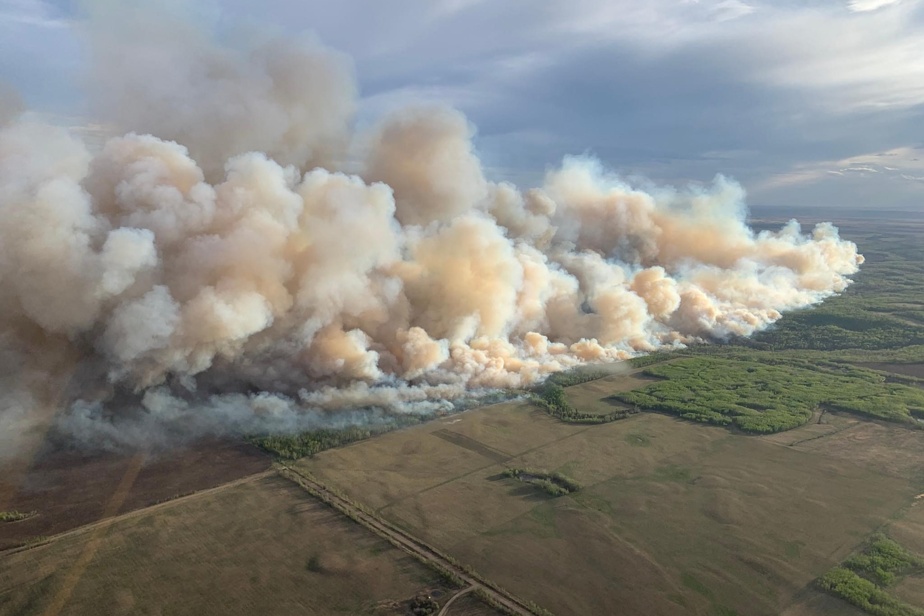As wind-driven wildfires broke out on the Hawaiian island of Maui last summer, killing more than 100 people and destroying thousands of buildings, a telecommunications outage left many residents in the dark.
The outage worsened an already devastating situation in areas such as the city of Lahaina, where about 13,000 people live and where evacuation orders and emergency communications from first responders were hampered.
In addition to all cell phones and landlines going out in Lahaina, the area faced a power outage for several days.
Authorities are still putting the pieces together to understand just how wrong everything went throughout the incident. A key lesson that can be learned from the Maui wildfires is that resilient telecommunications networks are essential in times of disaster.
Businesses and regulators in other countries, including Canada, are taking note amid increasing wildfires in remote areas.
“We need to understand what the limitations of networks might be and have plans that account for the possible loss of our usual sources of information,” said Jenifer Sunrise Winter, a communications professor at the University of Hawaii at Manoa. Ideally, you would have several options in case of failure. »
Last month, wildfires damaged fiber optic lines near Fort Nelson, British Columbia, causing cellular and internet outages for several days in the province’s north, as well as as in the Yukon and the Northwest Territories.
As telecommunications provider Northwestel worked to quickly restore service, the outage heightened the risks people in rural and remote Canada face in the event of a natural disaster.
This is an issue that the Canadian Radio-television and Telecommunications Commission (CRTC) is very aware of. Two consultations on this topic – one on ways to improve telecommunications services in the Far North and the other on how providers should report and inform customers of major service outages – are still ongoing .
“No network is perfect. Canada has some of the best networks in the world, but it is impossible to predict and prevent every potential outage,” said Adam Scott, vice-president of the CRTC, in a speech at a recent industry conference, organized by the Ivey School of Business in Toronto.
“At a time when the complexity of our networks continues to grow and the threats we face, including extreme weather or malicious actors, are more volatile and unpredictable than ever, the consequences of a lack of preparation are disastrous,” said Mr. Scott.
Operators are turning to AI
Canada’s three largest suppliers say robust plans are in place to mitigate the effects of wildfires on their infrastructure.
Bell Canada, Rogers Communications Inc. and Telus Corp. all tout several common elements of their strategies, such as examining grid stability throughout the year, installing fuel-powered generators in key areas to provide backup power, and working with provincial emergency management teams.
Companies also worked on unique initiatives.
As part of a partnership between Rogers and BC Wildfire Service, artificial intelligence cameras were installed on two of the operator’s towers in British Columbia in April, with plans to install three more.
Pano AI cameras are designed to detect smoke up to a range of 15 miles, allowing fire crews to see potential smoke from wildfires live and, if necessary, respond more quickly.
“Every minute counts,” recalled Aaron Pawlick, manager of strategic initiatives and innovation for BC Wildfire Service, in an interview. The sooner we can detect something, the better, because we could use it to get our resources into the field faster. »
Satellite connectivity has also been seen as a potential solution to keep customers connected during emergencies, particularly in remote areas.
Telus announced last year that it had successfully tested technology that allows smartphones to send and receive voice calls and text messages using satellites. The test was carried out in partnership with the Montreal supplier TerreStar Solutions inc. and non-terrestrial network service provider Skylo.
Rogers has partnered with SpaceX and Lynk Global to offer satellite-to-phone connectivity, while New Brunswick rural internet provider Xplore Inc. committed to bringing satellite internet to remote locations last fall after launching the Jupiter 3 satellite into space.
Rogers has partnered with SpaceX and Lynk Global to offer satellite-to-phone connectivity, while Xplore Inc. committed to bringing satellite internet to remote areas last fall, following the launch of the Jupiter 3 satellite into space.
“In an emergency situation, people look at satellite as a great alternative or redundant connection because it follows you everywhere,” said Rob McMahon, associate professor of media and technology at the University of Alberta.
